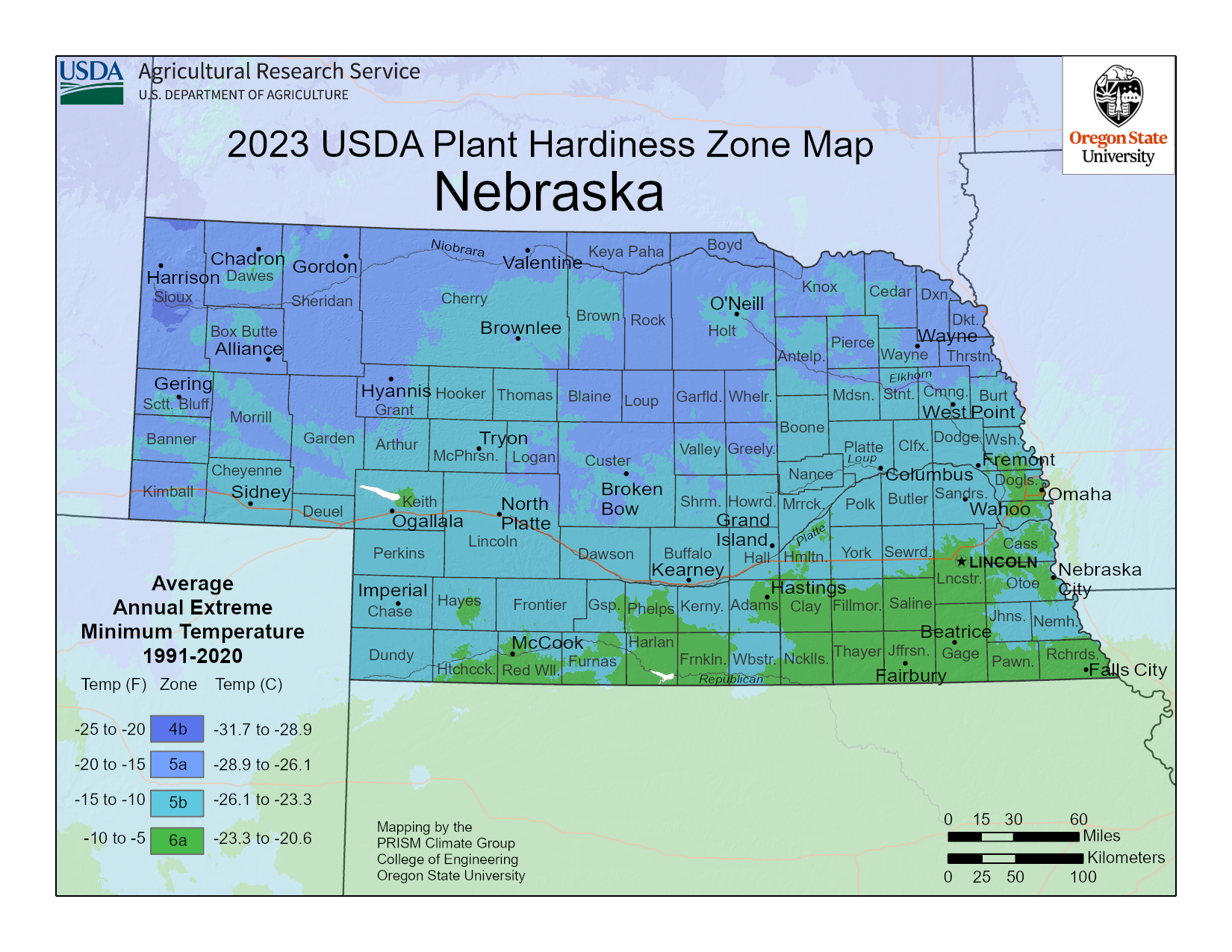Nebraska Planting Zones - USDA Map Of Nebraska Growing Zones

Click on the image above to see a larger version.
Nebraska USDA Plant Hardiness Map for Gardeners
If you live in Nebraska and are planning your garden, it is wise to check your location on the Nebraska planting map. The map above is based on the new USDA plant hardiness map, which is the result of 30 years of data collection across the United States. Depending on the zone you are in, certain plants will be able to survive winter temperatures in your area better than others. Nebraska has four zones in the state as indicated on the new 2023 USDA plant hardiness map. The Nebraska planting map includes 4b, 5a, 5b, and 6a. The majority of the state experiences extreme winter low temperatures of -25 degrees F. to -10 degrees F. (-29 to -23 C.). Knowing which planting zone you are in helps to ensure you will not lose plants over the winter months.
Enlarge the above map and find your location in order to determine your growing zone. Those that are new to gardening should pay particular attention to the Nebraska plant map and use the information as a base for selecting plants. Native plants and those that are sold locally will do best in the Nebraska winter. Always check the Nebraska plant map before incorporating any new shrub, tree, or flowers into your garden.
Gardening tips, videos, info and more delivered right to your inbox!
Sign up for the Gardening Know How newsletter today and receive a free copy of our e-book "How to Grow Delicious Tomatoes".
-
 12 Mother’s Day Garden Gifts That Celebrate Moms Who Love To Grow
12 Mother’s Day Garden Gifts That Celebrate Moms Who Love To GrowAll Moms deserve to feel special on Mother’s Day, so treat her to a thoughtful gardening gift that helps her get the most out of her hobby.
By Melanie Griffiths
-
 Never Plant Seedlings Until They Pass These 3 Simple Tests
Never Plant Seedlings Until They Pass These 3 Simple TestsDon't be over-eager to transplant seedlings into the garden before they are ready. These quick and easy checks will help ensure flourishing plants.
By Mary Ellen Ellis